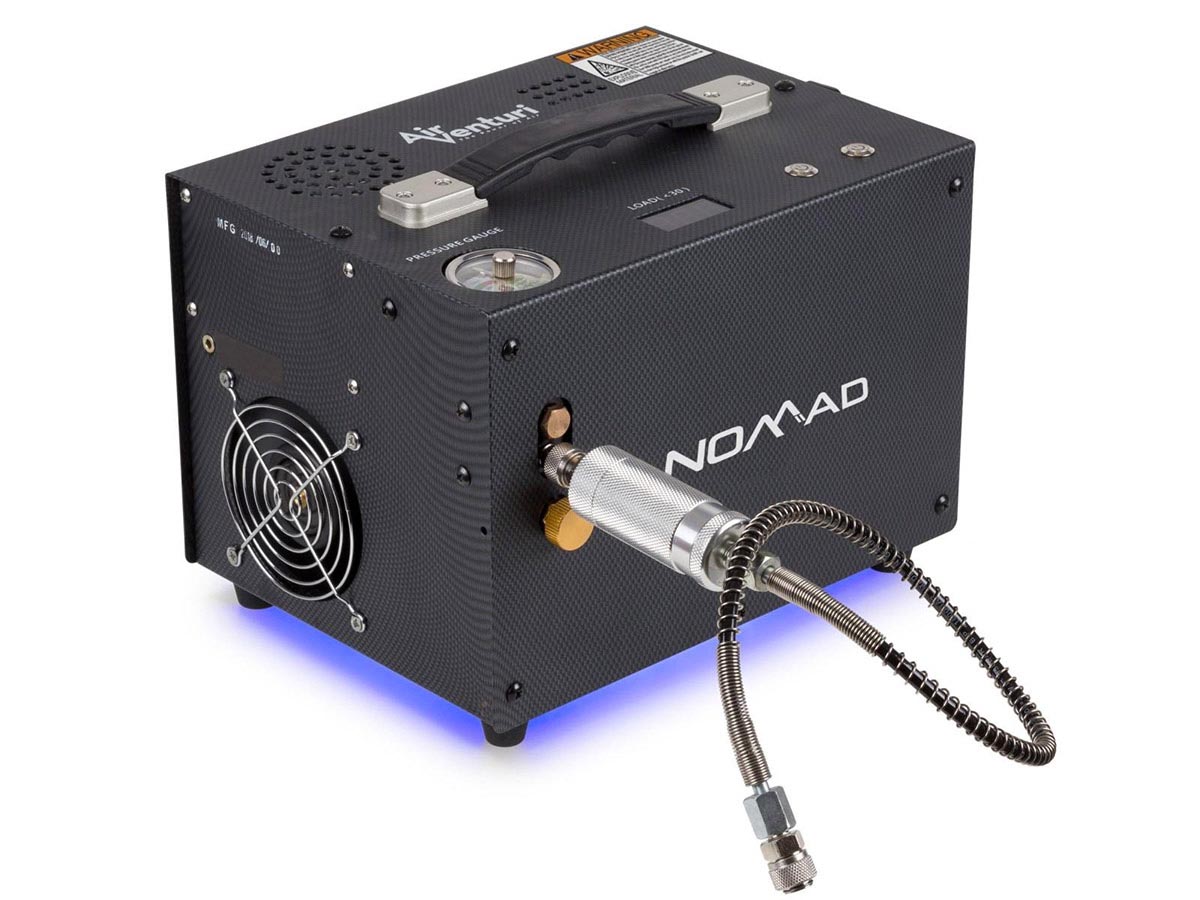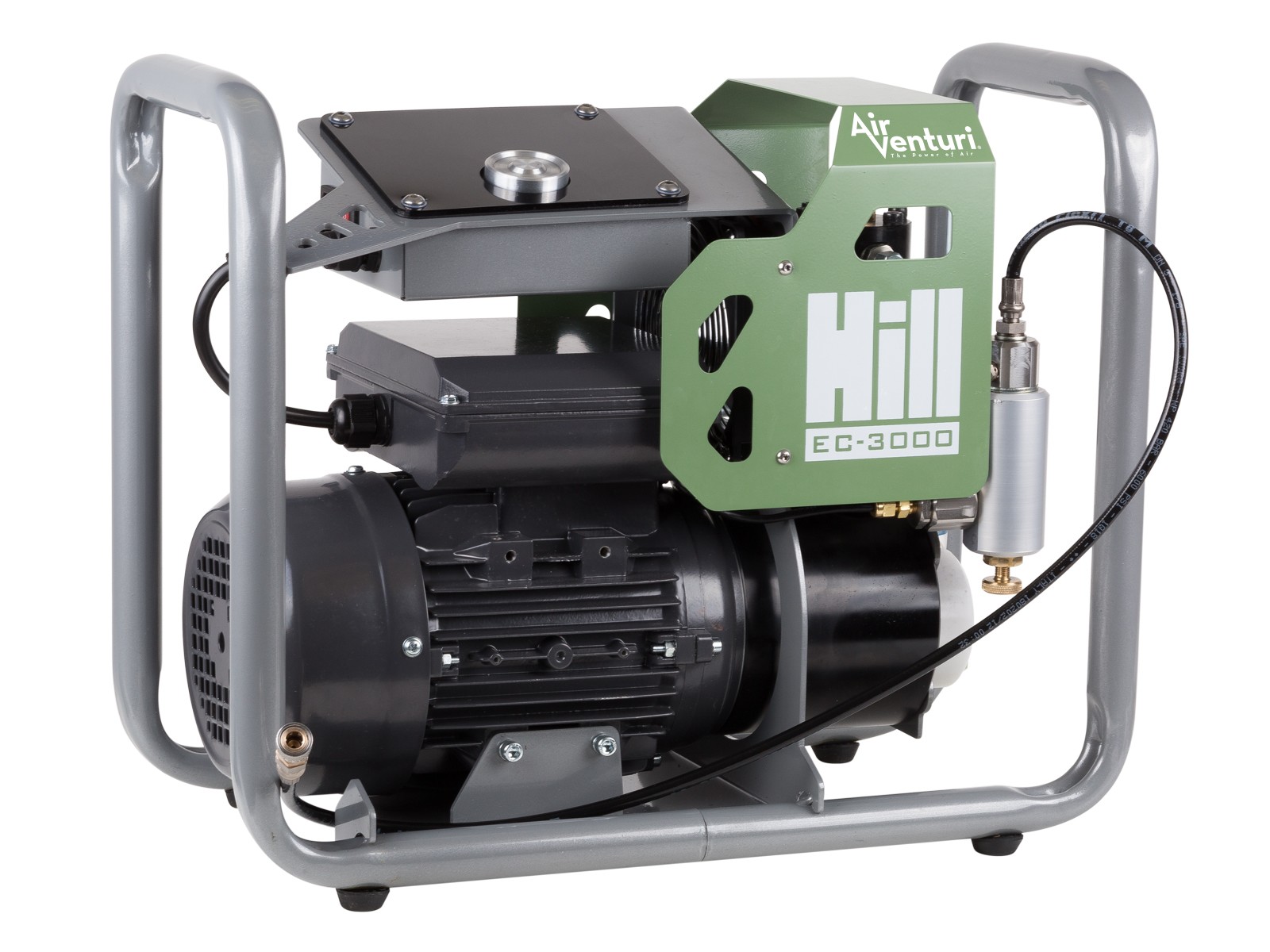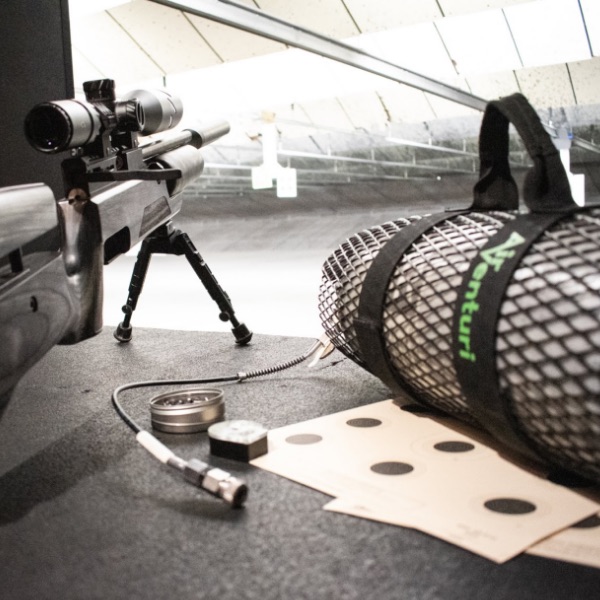We were reminded recently that PCP (pre-charged pneumatic) airguns are not new. It’s pretty cool that Lewis and Clark traveled with a multi-shot big bore airgun on their legendary expedition across the United States. What’s also not new are the challenges shooters face to air up their PCP airguns. In this article, we’ll explore some of the most common filling methods and discuss each method’s pros and cons.
Hand Pump
Without getting into the merits of brands and models, a good hand pump is the most common starting point in filling PCP airguns. They are affordable, simple to operate, and generally very reliable. If that were the end of it, this would be a short article, but hand pumps have some significant disadvantages not often identified.
While hand pumps need a lot of force to compress air up to the pressures required by many of today’s airguns, that’s not the most significant downside. Hand pumps have no means to properly dry the air before it goes into your airgun. Some hand pumps try to overcome this by adding a desiccant filter on the intake side, but this does little to help.
When air is compressed, it’s heated, and as it cools, it releases moisture. This happens on the output or the high-pressure side, not the intake. You could add a condensing tower to the output, but then you’d be hand pumping the tower and your airgun, which just adds to the work.
So, in a pinch or as a backup filling system, hand pumps are great. But, long-term usage may lead to moisture and other issues in your airgun. Let’s look at another option.
Personal Portable Compressors
In the past years, shooters have enjoyed an influx of cheap personal compressors. These units provide PCP owners a very simple filling option, many of which can easily hit that 4500 PSI mark. Many run on both 12v and 110, making them very portable and useful in just about any environment. Problem solved right? Well, maybe not.
So if the hand pump’s big issue was proper filtration and moisture, where do these personal compressors fit in?
Most will do a better job than the hand pump in providing clean, dry air to your airgun, but none have the type of condensing tower filtration that removes moisture out of the hot air as it comes out of the compressor. It’s better, but it’s often not enough.
Additionally, due to the system’s mechanical nature, you often introduce other contaminants besides just moisture. Metal particulates, oil, and other elements can make their way into your airguns, causing leaks and a total failure of key components if not filtered adequately on the output side. Regulated PCPs are the most susceptible to these issues, so if you have a more expensive, regulated airgun, you’ll want to make sure that you’ve put measures in place to address these potential issues.
Fortunately, there are many options to help overcome this that are user-serviceable and affordable. And because you are dealing with a mechanical system vs elbow grease, the additional time needed to pressurize the extra filter before filling your airgun is often negligible.
Light Duty Compressors
While more expensive, light-duty compressors offer cleaner dryer air and significantly higher fill rates than personal portable compressors. Most have at least a single-stage condensing tower with an integrated filter placed on the output side. This allows time and space for the moisture to separate from the hot, high-pressure air before it’s fed to your airgun.
Another significant advantage of these light-duty compressors is that many can fill carbon fiber tanks as well as airguns, allowing shooters to fill their tanks vs having to take them to a scuba shop or some other filling station.
The downside with these units is going to be their upfront costs. Many cost up to three to four times the price of a typical personal portable compressor.
Their longevity and ability to fill both airguns and high-pressure tanks can lead to significant savings. This makes these light-duty compressors an excellent option for PCP owners who shoot even two to three times a week.
Light Commercial Compressors
There are light-commercial compressors for serious shooters, small clubs, or even small businesses that want to provide high-pressure air to their members or customers. These units will provide breathing air quality for both tanks and airguns. They will use multiple filtration systems, ensuring the highest quality, dry air.
The upside with these compressors is their durability over the long term and their fill rate, filling a 98 cubic foot 4500 SCBA tank from empty to full in 15 minutes. The downside is their cost. A typical light consumer SCUBA-rated compressor starts around $3100 and goes up from there. Also, many do not have auto-shut-off systems and should not be used to direct fill airguns.
Shooters will need to have tanks in addition to the compressor to support their shooting habits.
So What Did We Learn?
We’ve come a long way from the days of Lewis and Clark. Shooters have many options to feed their PCP airguns, and as long as we know the various shortcomings of each system, we can find ways to make the most of whatever choice we make. The good news is that anyone, on just about any budget, can get out and get shooting their PCP rifles!
If you need help picking the right PCP filling system for your needs, then please get with us here at Airgun Depot and we’ll be happy to help you get all set up!



